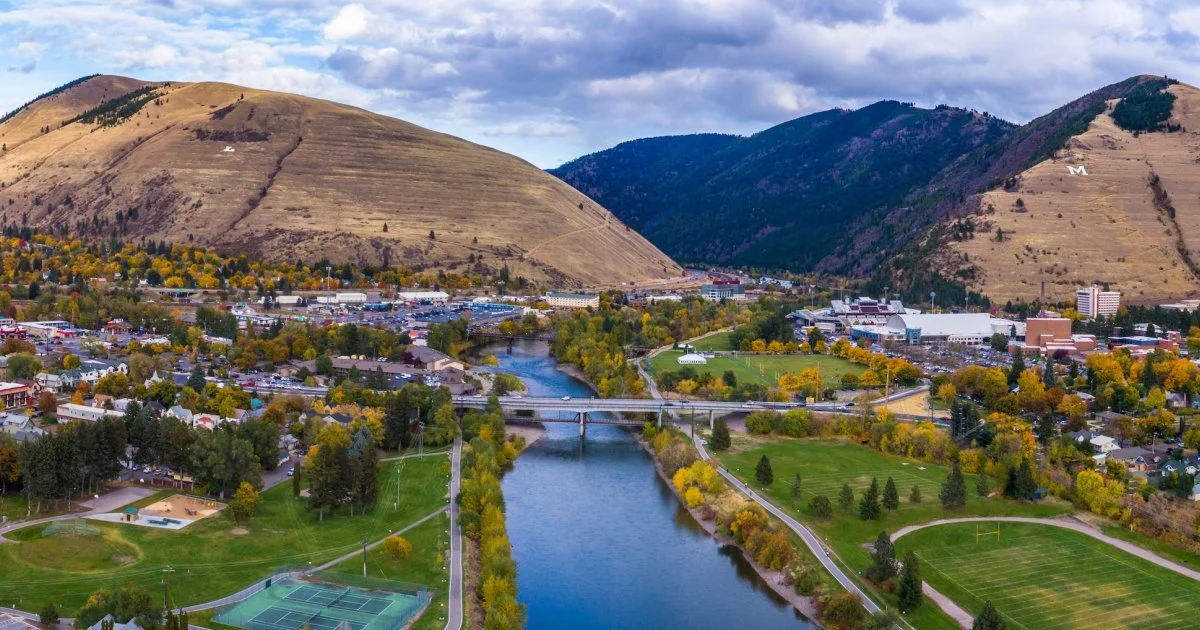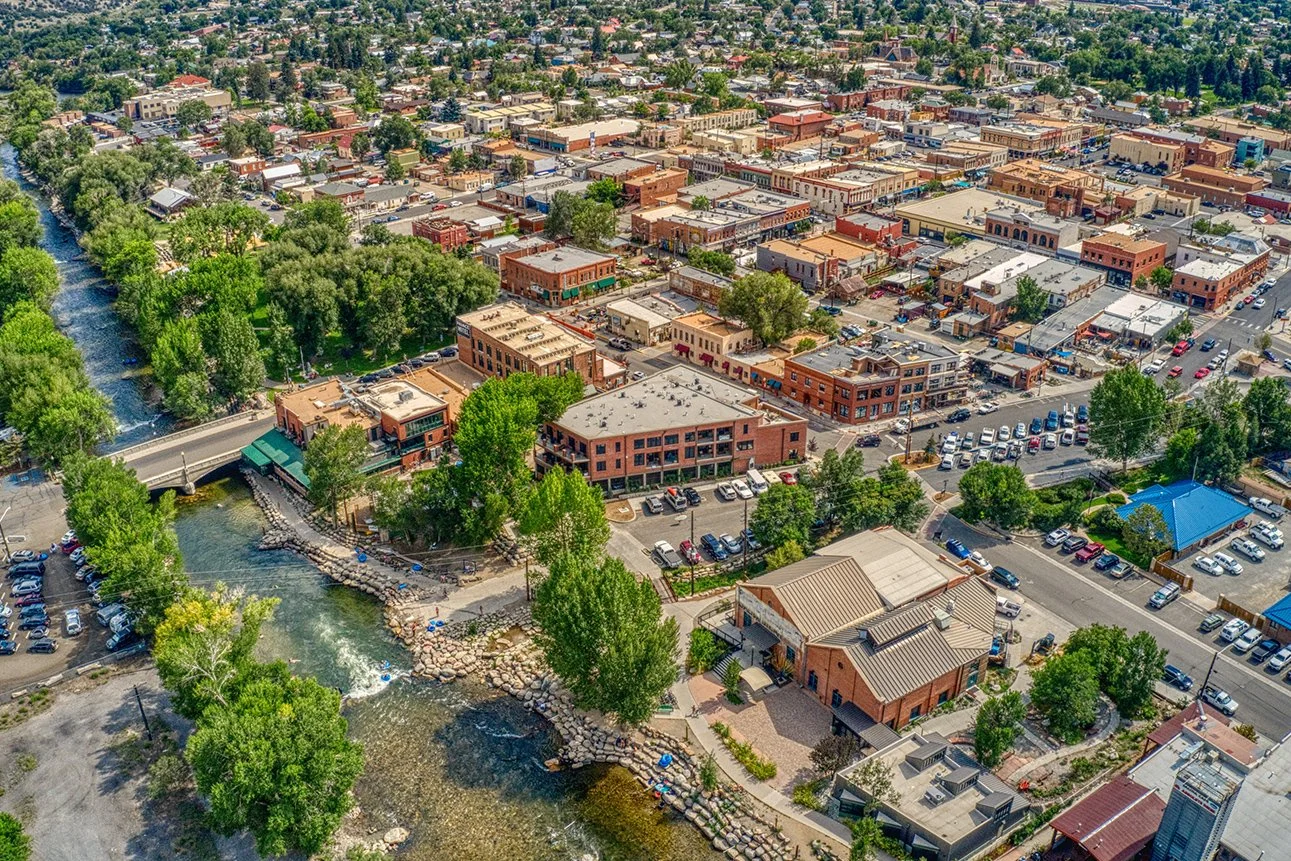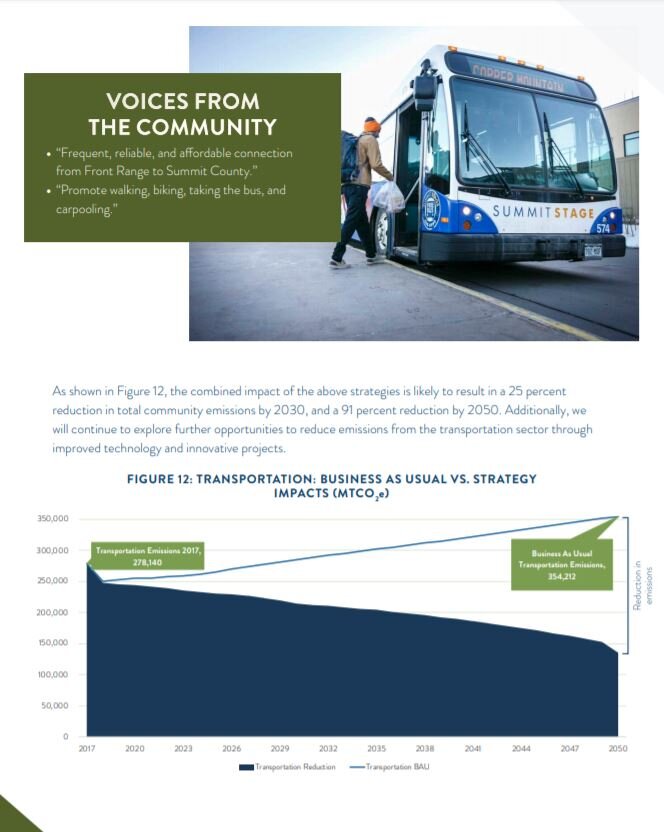Pitkin County, CO | GHG Inventories and Regional Summaries
County and Municipal-level Community-Wide GHG Inventories and Regional Summaries
Lotus developed 2019 and 2020 community GHG emissions inventories for Pitkin County, the City of Aspen, Snowmass Village, the Town of Basalt, and Unincorporated Pitkin County. In 2024, Lotus worked with Pitkin County again to update the County-wide greenhouse gas inventory as well as the Aspen municipal inventory. Lotus worked with CLEER to write summary reports with findings from the updated inventory. Lotus also completed a 2024 municipal GHG emissions inventory for Pitkin County, following the Local Government Operations Protocol. Lotus managed the data collection and workbook creation for the inventory. An inventory management plan detailing methodology was also created for the client. Lotus and Pitkin County are collaborating with ICLEI to pilot ICLEI’s ClearPath 2.0 software to help train the County on the software and to provide process and technical improvement feedback to ICLEI.
Town of Vail | Greenhouse Gas Inventory
Greenhouse gas inventory
Lotus worked with the Town of Vail to complete a 2023 greenhouse gas inventory for the community, as well as reconcile and update previous inventories to demonstrate progress on emission reductions. The 2023 inventory work was complemented by the development of a business-as-usual forecast of emissions. Using those combined data products, Lotus engaged Town staff to develop policies and strategies to model and estimate future emission reductions. Finally, Lotus provided support for Town staff to develop and update presentations and briefings for the Town Manager and Town Council.
Missoula | GHG Inventories
Missoula, Montana
Lotus built off of the great work from previous greenhouse gas inventories at the City of Missoula to conduct a municipal and a community-wide greenhouse gas inventory for the year 2023. Along with these inventories, Lotus created an inventory management plan (IMP) documenting all data sources and methods used in the inventory. The IMP also included instructions for updating inventories enabling Missoula to develop their own inventories in the future.
Chaffee County, Colorado | Sustainable Development Plan
Chaffee County Sustainable Development Plan
Lotus worked with Chaffee County to create the first Sustainable Development Plan (SDP) for the County. This plan was designed to align with existing community plans, identify prioritized goals for sustainable development, determine immediate action steps to implement those goals, and create success tracking metrics. The Sustainable Development Plan included several key sectors of focus including Equity, Resilience, Water, Development, Energy, Transportation, Waste and Resources, Working Landscapes, Social Systems, and Recreation. Lotus conducted engagement with community experts in each focus area to inform the strategies and worked closely with a Steering Committee to review and finalize the plan.
Winter Park, Colorado | GHG Inventories and Climate Action Planning
Town of Winter Park, Colorado
Lotus worked with the Town of Winter Park to complete the first ever greenhouse gas emissions inventories for the town government and the community. In addition to creating these inventories, Lotus developed a business-as-usual emissions model and is modeling several emissions reductions strategies to aid in the Town’s development of its first Climate Action Plan. Due to the small size of the Town, many innovative methods were used to collect and manipulate data to make it relevant to the Town, such as working closely with Winter Park Resort and utilizing Streetlight vehicle miles traveled data.
Lotus also worked with the Town to complete its first ever Climate Action Plan. This will involve the development of a climate risk and vulnerability assessment, additional GHG emissions reduction strategy modeling, cost modeling, and strategy prioritization. Prioritization of the strategies will take into account factors such as cost to implement, GHG emissions impact, funding sources/availability, and equity impacts.
Aspen, Colorado | C&D Waste Audit
Aspen, Colorado | Construction & Demolition Waste Audit
Construction and Demolition (C&D) debris management can be a considerable challenge for communities with limited landfill space and/or concerns about methane production in their landfill. Much of C&D debris is often bulky, heavy, and most importantly can be diverted from the landfill to be recycled or repurposed. The city of Aspen has taken this challenge head-on.
In January 2022, the Aspen City Council set a Science Based Target to reduce greenhouse gas emissions 63% by 2030 and net zero by 2050. They also set waste reduction targets to reduce organic material going to landfill by 25% by 2025 and 100% by 2050, and a reduction of all waste going to the landfill by 70% by 2050. While a typical landfill fee approach is to weigh the items going into a landfill, Aspen wanted to better calculate fees based on the environmental impact of C&D materials that should be diverted, but arrive at the landfill unsorted. Using a dataset of Embodied Carbon for materials and the U.S. Environmental Protection Agency’s Social Cost of Carbon, Lotus quantified the present cost of future environmental damage from the material’s life cycle of extraction, production, transportation, and ultimately disposal. Aspen is currently in the process of applying this metric to C&D debris that originates within the City of Aspen.
Blaine County, Idaho | County-Wide GHG Inventory
County-Wide GHG Inventory
Lotus worked with Blaine County, Idaho to complete a 2023 county-wide greenhouse gas emissions inventory. The inventory includes breakout tabs for the following communities: Hailey, Ketchum, Sun Valley, and Bellevue. The project updated previous inventories for the multiple communities and aligned methods and data sources across each community. The workbook also included a tab with activity and emissions data to be imported into ArcGIS Online allowing for easy creation of an interactive online dashboard to show the results of the inventory.
City of Bozeman | GHG Inventory, Infographic, and Report
GHG Inventory, Infographic, and Report
Lotus developed Bozeman’s 2020 community GHG inventory and developed an inventory management plan for the City’s new Sustainability Associate. Lotus also presented the results of the inventory in person to the City’s Sustainability Board and trained the Bozeman team on how to update the inventory workbook in future years. Additionally, Lotus created a final report that described the results of the inventory, trends between the baseline year (2008) and the 2020 inventory, and results from an analysis of the average annual carbon sequestration of the city’s lands using the LEARN tool from ICLEI. Lotus also developed an infographic for the City to use when communicating the results of the inventory with residents and important stakeholders.
Park City, Utah | Community GHG Inventories
Community GHG Inventories
Lotus first worked with Park City in 2017 to create the City’s 2016 community-wide greenhouse gas emissions inventory. Lotus later worked with the City again in 2022 to develop follow up inventories for calendar years 2020 and 2021. The Global Protocol for Community Greenhouse Gas Emissions Inventories (GPC) was utilized to complete all inventories.
Clear Creek County | Vehicle Electrification Plan
Vehicle electrification plan
Lotus lead the community engagement tasks for Clear Creek County, Colorado, and their Vehicle Electrification Plan. We created and disseminated a community survey to gather information about EV use and barriers to adoption. Our team also conducted 12 informational interviews with stakeholders across the spectrum from community leaders to the local utility. We convened one focus group to vet and confirm the data collected from the community, as well as co-create the strategies for the County’s EV readiness plan. Lotus then prepared a report detailing the results of our engagements with a clear description of the barriers to EV readiness in the community and many solutions to address those barriers. An important aspect of this project was our focus on the impacts of EVs on underserved communities. We made several key suggestions to address EV equity throughout the community in our report.
Eagle County | Resiliency Plan
Lotus led a stakeholder engagement process to support the development of the Eagle County Resilience Framework. This process included background data collection, hosting several informational interviews, convening a Resilience Working Group, and hosting two workshops to understand and develop overarching strategies to address and enhance resilience and vulnerability across Eagle County. Workshops and engagement sessions were designed to ensure a diverse representation of the community could make their voices heard in the planning process, and considerations of equity were an integral part of the engagement process and plan outcomes. The final Eagle County Resilience Plan exists as a project website to guide implementation work over the years to come. Lotus subcontracted to Adaptation International on this project; AI developed the final project website.
“On behalf of our team, the RWG [Resiliency Working Group], and our community, I wanted to thank you for a great workshop this morning. I thought the presentation info and dialogue was excellent and exceeded my expectations for the work we would accomplish for the event”
Eagle County | Code Cohort
Lotus provided project management and facilitation for the Eagle County Code Cohort. The project included the facilitation of three meetings with representatives from each Eagle County jurisdiction to create a set of above code standards—including solar-readiness, EV-readiness, and electric-readiness—that jurisdictions could adopt alongside the 2021 I-Codes, specifically the 2021 International Energy Conservation Code (IECC). Equity, GHG reductions, and the needs of individual communities were discussed during the cohort meetings and a consensus was reached for the recommended code package.
The cohort included code package development and individualized community support to help each partner community with its code adoption process. Lotus worked with consultant partners Southwest Energy Efficiency Project (SWEEP) and Mozingo Code Group throughout the project to develop the code package for the region. The consultant team developed supporting materials such as fact sheets, customized presentations, training materials, and other individualized support requested by each community. Lotus and the consultant team attended council meetings and study sessions with staff to ensure the code package was understood and could be adopted by each leadership council.
Finally, Lotus facilitated a public engagement process for the new code package which included an informational webinar and community survey to understand community concerns and support for the new code package.
Below is a presentation about this project from the Mountain Towns 2030 conference in 2023.
Eagle County | Building Code Energy Modeling & Upfront Cost Analysis
In 2022, Lotus supported Eagle County in analyzing new construction code packages with electrification amendments to provide energy use and cost data which will be used to inform the County code update process in 2023. Lotus analyzed four code package options as they compare to Eagle County’s current new construction energy code, the 2015 International Energy Conservation Code (IECC). The code packages were evaluated by
Upfront cost impacts,
Greenhouse gas (GHG) impacts over the lifetime of the building, and
Operational energy cost impacts over the lifetime of the building.
The code packages investigated in this study included the 2021 IECC without amendments, the 2021 IECC with an electric-ready amendment, the 2021 IECC with an electric-preferred amendment, and the 2021 IECC with an all-electric amendment. These code options were analyzed for single-family homes, multi-family complexes, and commercial properties. The scope of work consisted of:
Upfront Cost Analysis: A literature review of existing studies analyzing the cost impacts of updating energy codes from prior code cycles, in this case, the 2015 and/or 2018 IECC, to the 2021 IECC. Additional studies were reviewed to understand the upfront cost impacts and cost-effectiveness of three additional above-building code standards, including electric-readiness, electric-preferred, and all-electric provisions.
Energy Modeling: Energy modeling for three building types typical of Eagle County construction: a single-family home, a multifamily building, and a mixed-use commercial building. Each building type was modeled to meet four code standards: the County’s current energy code (2015 IECC), the 2021 IECC, the 2021 IECC plus an electric-preferred standard, and the 2021 IECC with all-electric systems. The modeling was conducted to evaluate total annual energy consumption, total annual energy costs, and greenhouse gas emissions over the lifetime of the building (40-year period) to understand the emissions and cost implications of advancing to a new building code. The single-family and multifamily energy models were developed using the National Renewable Energy Laboratory’s Building Energy Optimization Tool. The commercial building energy model was developed using the Department of Energy’s eQUEST tool.
The upfront cost analysis and the energy modeling will demonstrate which code options are the most cost effective and which will have the greatest contribution to reducing greenhouse gas emissions in the County. In addition, Eagle County will be participating in a code cohort with surrounding jurisdictions to review and adopt supporting amendments alongside the 2021 I-codes. This effort will help advise Eagle County on which supporting amendments will support the achievement of their climate action goals through their next phase of energy code adoption.
Pierce County, WA | GHG Inventory
Lotus developed 2015 and 2019 municipal operations GHG inventories for Pierce County, Washington. Lotus analyzed building level data and estimated emission factors for several utilities from which the County receives electricity. Additionally, Lotus created an inventory management plan (IMP) documenting all data sources and methods used in the inventory. The IMP also included instructions for updating inventories enabling Pierce County to develop their own inventories in the future.
“Lotus conducted Pierce County’s operational greenhouse gas emissions inventory. Their level of knowledge and expertise made the process straightforward and painless, analyzing diverse datasets and distilling complex calculations into sharable narratives. Frequent communication, quick turnarounds, and the team’s positivity made it an overall great experience.”
Pitkin County, CO | Embodied Carbon Analysis
Lotus conducted data analysis for Pitkin County and the Roaring Fork Valley, in partnership with Brightline Group, to estimate residential climate emissions and embodied carbon from the construction and home management sectors. This data was to guide local policy development. Using a data-storytelling process, Lotus detailed the impacts from the construction and home management economies on the region’s greenhouse gas emissions.
Key findings from the Embodied Carbon Analysis can be found HERE
Routt County and City of Steamboat Springs | GHG Emissions Inventory and Climate Action Plan
GHG Emissions inventory and climate action plan
Lotus has been hired twice by Routt County (with the support of Steamboat Springs) to complete sustainability projects. In 2019, Lotus worked with Routt County and Steamboat Springs to complete a 2018 GHG emissions inventory that was GPC-compliant. Lotus performed all data collection and analysis, developed a City- and County-specific emissions reporting tool, backcasted (until 2005) and forecasted (until 2050) emissions, developed an inventory management tool, and wrote an inventory summary report.
In 2020/2021, Lotus led the development of Routt County’s Climate and Adaptation Action Plan which included leading an informed stakeholder engagement process considering equity, modeling the impact of emission reduction strategies, and developing an aspirational yet achievable Climate Action Plan for the County and each municipality located within the community. Lotus also helped design a public-facing website to assist with community engagement.
You can track the progress in implementing the plan HERE.
Summit County, CO | Climate Action Plan & Climate Equity Plan
The jurisdictions, municipalities, ski areas, and institutions in Summit County, convened by High Country Conservation Center (HC3), contracted with Lotus to create a Climate Action Plan for the community. Lotus guided and supported the entire development process, which included conducting Summit County’s first GHG emissions inventory. Lotus facilitated and led the stakeholder engagement process that informed the development of Summit County’s Climate Action Plan in collaboration with the High Country Conservation Center. Our team convened meetings of stakeholders and experts, provided education and background on climate change, and facilitated conversations to develop strategies that will reduce emissions and achieve the goals of the Climate Action Plan for this mountain community. The development process also included modeling the impacts of stakeholder-selected strategies to determine emissions reductions, energy use, and other benefits; forecasting a business-as-usual case scenario; and providing the community with a final Climate Action Plan that defines aspirational targets for climate mitigation and resiliency and establishes a path towards achieving these goals.
Lotus ultimately developed a Comprehensive GHG Inventory and an aspirational yet achievable Climate Action Plan for the County.
Since completing the County’s Climate Action Plan, the jurisdictions in Summit County embarked on implementation work. Lotus worked with the High Country Conservation Center to update the County’s GHG inventory with 2021 data and develop a Climate Equity Plan that specifically details projects and programs to enhance equity in the community through the implementation of climate action work. Lotus facilitated an equity steering committee that included representatives from local community-based organizations, local governments, and agencies serving disproportionately impacted communities in Summit County. The Steering Committee advised on the development of a tri-lingual public survey, listening sessions, and informational interviews to guide the development of climate equity strategies that will supplement the existing climate action work. During the implementation of this work, HC3 will continue to work with Steering Committee members through the strong relationships that were built in this process to ensure that climate equity strategies meet their intended goals in supporting benefits for all Summit County residents.
Below is a presentation on Summit County’s Climate Equity Plan from Mountain Towns 2030.
“Lotus’ expertise was instrumental in developing our community’s climate action goals and understanding what it will take to meet them. Their depth of knowledge and nimble facilitation skills were a tremendous asset to our planning process.”
Town of Mountain Village | GHG Emissions Inventory and Climate Action Plan
Lotus worked with the Town of Mountain Village to complete a 2019 greenhouse gas emissions inventory and the Town’s first-ever Climate Action Plan! This effort was necessary in order to understand the specific emissions sources and impacts that the Town could influence, as well as modeling the status-quo emission projections over the coming years. The resulting Climate Action Plan (CAP) for Mountain Village presents the framework for achieving significant emissions reductions in the community between 2020 and 2050. Lotus then developed Mountain Village’s 2020 community GHG inventory and 2020 municipal GHG inventory. Additionally, Lotus modeled the impact of various current and proposed incentive programs on GHG emissions through 2030.
2020 Community GHG inventory Results Summary, Community and Municipal GHG Emissions Inventory Results Memos.





































